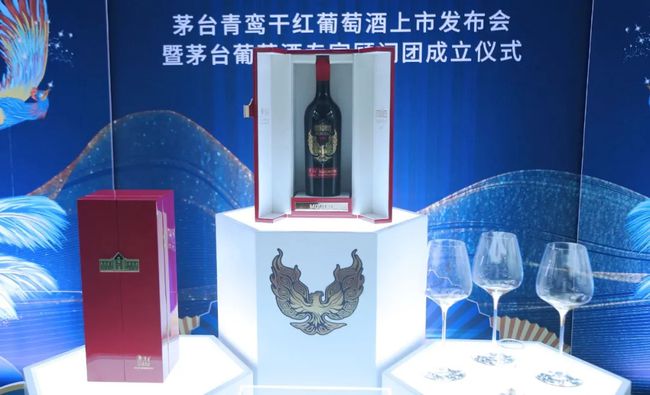Wildly popular baijiu producer Kweichow Moutai isn’t content with ruling China’s spirits market, it also wants a bigger share of the grape wine scene. Its wine subsidiary, founded in 2002, just launched a dry red wine called Qingluan for CNY3299 / US$510 per bottle. The justification at least in part? There are only 9,999 bottles available (see below for my initial reaction).
A launch event was held at Moutai’s Phoenix Estate winery in Changli in Hebei province, close to the east coast, where the company has ~5,000 mu (330 hectares) of vineyards, including Cabernet Sauvignon, Shiraz and Chardonnay. An advisory committee has also been created, with trade people such as Li Hua from the wine college at Northwest A&F College in Shaanxi and Li Demei, a professor who has consulted for wineries across China.
This new effort by Moutai, which has been selling wine under its own label for years, is part of seeking a better stock performance.
“After posting losses in 2017, Moutai’s wine subsidiary saw its operating income rise to 218 millon yuan last year from 130 million yuan in 2018,†states Chinese media outlet Global Times. “The wine unit disclosed in April its plans to float on the A-share market by 2025.â€
Global Times noted that Moutai’s spirits arm had 98 billion yuan-plus of operating income in 2020, nearly 500 times more than its wine subsidiary.
My immediate reaction to this new wine was a flashback to a 2011 visit to Chateau Junding in Shandong, then under different ownership, when I asked why some wines from this fairly new operation were priced at rmb27,998. (See The 27,998 wine question.) As with the Moutai wine, production was stressed: In this case only 5,000 bottles were made, I was told.
This was during the Bordeaux craze in China, when status-conscious consumers were interested in high-priced hard-to-get French wines soaked in highfalutin jargon. It seems some of that same dynamic—this time paired with the most famous spirits brand–is again being leveraged to establish a benchmark price, in this case one that also happens to be close to Lafite’s Chinese wine Longdai.
Will this strategy work, given many consumers are savvier and better informed than a decade ago? As one person said, “This seems like the same old same old.” But in a wine market as unpredictable as China, who knows? Maybe Lafite will even launch its own baijiu?
Anyway, Moutai isn’t the only major baijiu producer attracting attention in the wine world this year. A few months ago, Luzhou Laojiao caused much chatter after it backed a Judgment of Berlin-style contest, headed by China-based MWs Fongyee Walker, Edward Ragg, Gus Zhu and Julien Boulard, in which the winner was a Chilean brand Luzhou Laojiao itself imports and distributes. I’ll have more on this and other examples in a future post.
Grape Wall has no sponsors of advertisers: if you find the content and projects like World Marselan Day worthwhile, please help cover the costs via PayPal, WeChat or Alipay.
Sign up for the free Grape Wall newsletter here. Follow Grape Wall on LinkedIn, Instagram, Facebook and Twitter. And contact Grape Wall via grapewallofchina (at) gmail.com.
